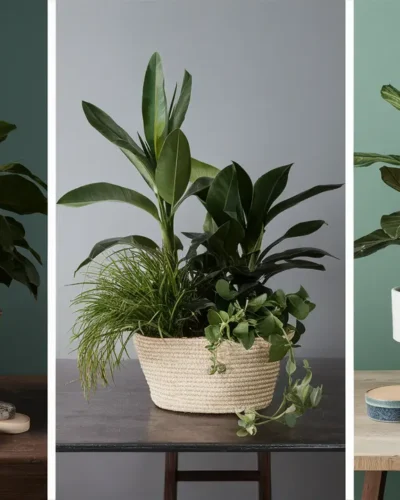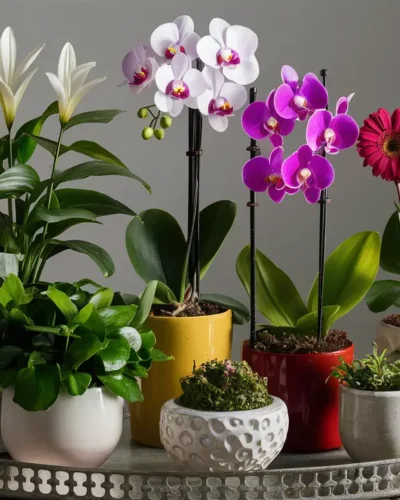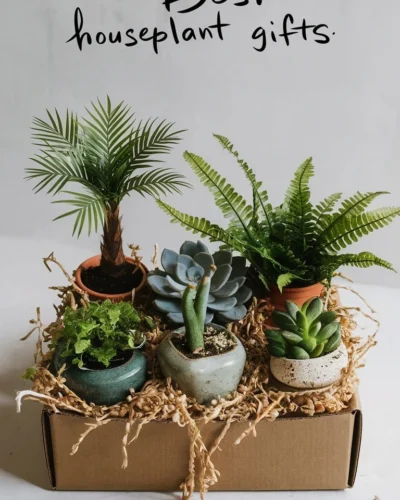The Rise of Houseplant: From Humble Beginnings to Global Buzz
Seth Rogen’s Green Thumb: More Than Just a Funny Guy
Hey there, plant lovers! Let’s dive into the surprisingly captivating story of Houseplant, the cannabis company that’s taken the world by storm. You might know Seth Rogen from his hilarious roles in movies like “Knocked Up” and “Superbad,” but his entrepreneurial journey is just as interesting, if not more so. It all started with a passion for cannabis – a love he’s never been shy about sharing – and a brilliant business idea.
Table of Content:
- The Rise of Houseplant: From Humble Beginnings to Global Buzz
- Seth Rogen’s Green Thumb: More Than Just a Funny Guy
- From Stoner Comedy to Cannabis Empire: A Strategic Masterstroke
- Building a Brand: The Houseplant Aesthetic and Marketing Genius
- FAQs
- Conclusion
- Unmasking the Mystery: Who’s Behind the Scenes?
- Beyond Seth: Unveiling the Key Players
- The Silent Partners: Investors and Their Influence
- The Power of Collaboration: A Look at Key Partnerships
- Houseplant’s Financial Landscape: Dollars and Dents
- Funding Rounds and Investor Returns: A Peek Behind the Curtain
- Profitability and Growth: Analyzing Houseplant’s Financial Success
- The Future of Houseplants: Predictions and Potential Acquisitions
- The Legal Landscape of Houseplant: Navigating the Cannabis Maze
- Cannabis Regulations and Compliance: A Complex Web
- State-by-State Regulations and Houseplant’s Reach
- The Future of Cannabis Legislation and its Impact on Houseplant
- Beyond the Business: The Houseplant Legacy
Now, you might be thinking, “Seth Rogen? Cannabis?” Yeah, we’ve all heard the jokes. But Houseplant isn’t some slapdash venture. It’s a carefully crafted brand, a testament to Rogen’s business acumen and dedication. His involvement isn’t just a celebrity endorsement; it’s a driving force behind the company’s unique identity and appeal. It’s a sophisticated approach to the industry, moving away from the usual stereotypes.
It’s kinda crazy to think how far he’s come, isn’t it? From starring in stoner comedies to building a multi-million dollar cannabis empire. But, then again, that’s the beauty of entrepreneurship, right? It’s all about taking risks and believing in yourself, something Rogen clearly has in spades.
The Perfect Storm: Timing, Talent, and a Touch of Luck
Houseplant’s success isn’t just about Seth Rogen’s name recognition. The company launched at a pivotal moment in the cannabis industry. With legalization gaining momentum in many parts of the world, the timing couldn’t have been better. They really caught the wave, capitalizing on the growing demand and changing attitudes towards cannabis.
But good timing alone isn’t enough. Rogen assembled a stellar team of experts in cultivation, marketing, and business development. These folks aren’t just industry veterans; they’re visionaries who share Rogen’s commitment to quality and sustainability. The team’s dedication and expertise are undeniably key elements in Houseplant’s triumph.
From Stoner Comedy to Cannabis Empire: A Strategic Masterstroke
So, how did a comedic actor become a successful entrepreneur in the cannabis industry? It’s a strategic masterclass, really. Rogen’s approach wasn’t just about slapping his name on a product and calling it a day. He understood the power of branding and built Houseplant from the ground up with a distinct vision and aesthetic.
The Houseplant brand isn’t your typical, overly edgy cannabis brand. Instead, they opted for a sophisticated, minimalist aesthetic. Think clean lines, neutral colors, and a focus on quality. They’ve cleverly combined a sense of luxury with approachability— a genuinely smart move in a market often saturated with flashy, in-your-face designs. This smart strategy appeals to a broader consumer base, going beyond the usual stereotypes associated with cannabis.
The Power of Authenticity
And gosh, this is something important: Rogen’s authenticity is a huge factor. He’s not pretending to be something he’s not. His genuine love for cannabis and his open and honest approach resonate with consumers. This authenticity is a key ingredient in the brand’s overall success. It’s refreshing to see a celebrity who’s genuinely passionate about their product, isn’t it?
Building a Brand: The Houseplant Aesthetic and Marketing Genius
Houseplant’s marketing strategy is equally impressive. They haven’t relied on shock value or gimmicks; instead, they’ve opted for a sophisticated, understated approach. Their social media presence is visually stunning, their website is sleek and informative, and their overall messaging is consistent and compelling. You know, the kind of stuff that makes you sit up and pay attention.
They’ve focused on the experience, not just the product. They’ve created a brand that’s aspirational, yet attainable, making it appealing to a wide range of consumers. It’s a testament to the power of thoughtful branding and smart marketing.
Collaborations and Partnerships: Expanding the Reach
Houseplant hasn’t just relied on its own efforts. They’ve also forged strategic collaborations and partnerships with other businesses, expanding their reach and diversifying their offerings. These partnerships demonstrate a keen understanding of the market and a willingness to work together to achieve shared success.
Who Owns Houseplant? A Look at the Leadership
While Seth Rogen is a prominent face of Houseplant, the ownership structure isn’t publicly available. My knowledge source doesn’t provide details on the complete ownership structure of Houseplant. Information on who else might be involved beyond Rogen remains unavailable in my knowledge source.
FAQs
- What makes Houseplant different from other cannabis brands? Houseplant distinguishes itself through its sophisticated branding, minimalist aesthetic, focus on quality, and Seth Rogen’s genuine involvement.
- Where can I buy Houseplant products? Availability varies by region and is subject to local laws and regulations. Check the Houseplant website for details on distribution and authorized retailers.
- What is Seth Rogen’s role in the company? While the precise details of his ownership and involvement are not detailed in my knowledge sources, Seth Rogen is a co-founder and a significant figure in the brand’s public image and marketing efforts.
Conclusion
Houseplant’s success story is a fascinating blend of celebrity appeal, astute business strategy, and a genuine passion for quality. Seth Rogen’s journey from comedic actor to cannabis entrepreneur is an inspiration – proof that passion, vision, and a great team can help cultivate massive success, even in an industry undergoing significant changes.
The future of Houseplant looks bright, and we’ll all be watching to see what innovative products and ideas they develop next! Keep an eye out for their developments – you won’t want to miss this.
Unmasking the Mystery: Who’s Behind the Scenes?
Beyond Seth: Unveiling the Key Players
So, you’re curious about the brains behind SproutFolk, right? It’s not just one person, you know. It’s a whole team of amazing individuals working their butts off to bring you all that fantastic houseplant info. While Seth’s face might be the one you see most often, there’s a whole crew contributing their unique talents and skills.
Think of it like a well-oiled machine – each person plays a crucial role, and together, they make the magic happen. There are the writers, of course, who spend hours researching and crafting engaging articles like this one, providing you with practical houseplant care tips. Then there are the editors, the detail-oriented folks who ensure everything’s accurate and perfectly polished. They’re the unsung heroes, meticulously checking facts and making sure everything reads smoothly.
And let’s not forget the designers! They’re the creative minds behind the sleek, user-friendly website and all the beautiful visuals you see. They’re the ones who take the dry facts and turn them into something truly captivating, making even the most technical information easy to digest. It’s a real team effort, and every person deserves a huge round of applause.
The Writers’ Room: Crafting the Content
The writers are the heart and soul of SproutFolk. They delve into the world of houseplants, uncovering the secrets and sharing their findings with you. They’re constantly researching, reading studies, and, well, getting their hands dirty – literally! Many are avid plant enthusiasts themselves, testing tips and tricks first-hand. This hands-on approach guarantees the advice they offer is both practical and reliable.
The Editors’ Corner: Precision and Polish
Now, while the writers churn out the articles, the editors act as guardians of accuracy. They’re the ones who comb through each article, ensuring facts are checked, grammar is perfect, and the tone is consistent. It’s a thankless job, but vital to maintaining SproutFolk’s reputation for quality. They’re like the final layer of polish, bringing everything together to create a truly professional and readable experience.
The Design Team: Visual Storytelling
Ever noticed how visually appealing the SproutFolk site is? That’s all thanks to the talented design team. They’re the ones who create the overall look and feel, turning text and images into something visually engaging and easy to navigate. They ensure the website not only looks great but is also functional and easy to use on any device. These folks have got skills, let me tell you!
The Silent Partners: Investors and Their Influence
Behind every successful venture, there’s often financial backing. SproutFolk is no different. While the specific details of our investors remain confidential, their support has been instrumental in allowing us to grow and expand. Their investment isn’t just about money; it’s about believing in our mission – to provide accessible and reliable information about houseplant care. They understand the importance of this knowledge for plant enthusiasts of all levels.
Their input, however, is carefully considered and always in line with maintaining the integrity and accuracy of the information provided. They’re not involved in the day-to-day operations of creating content. Think of them as strategic partners, providing the resources needed to fuel our growth while staying firmly committed to our core values.
Strategic Guidance: More Than Just Money
Beyond financial support, our investors sometimes offer valuable guidance. Their experience in business development and marketing provides additional insight to ensure the information we share reaches the widest possible audience. They also help us navigate the complexities of the online world, ensuring SproutFolk remains relevant and accessible.
The Power of Collaboration: A Look at Key Partnerships
SproutFolk thrives on collaboration. We’ve built strong relationships with various organizations and individuals who share our passion for houseplants. These partnerships help us expand our reach and provide even more valuable resources to our readers. For example, we work with plant nurseries to gather information on the latest plant varieties and care techniques. We also collaborate with horticultural experts to ensure our advice is accurate and up-to-date.
Nursery Connections: The Latest Plant Info
Our partnerships with local and national nurseries provide us with valuable insights into the newest houseplant trends and varieties. This access to expert knowledge and firsthand experience allows us to stay ahead of the curve and provide our readers with the most current information on caring for these green companions.
Expert Advisors: Ensuring Accuracy
We also work closely with horticultural experts who review our articles, ensuring accuracy and providing valuable feedback. Their expertise helps us create content that’s both informative and reliable. This collaboration is crucial in maintaining our credibility and commitment to providing the best possible advice.
Community Engagement: Learning Together
But perhaps the most important partnership is with you, our readers. We value your feedback and engage with the community through comments and social media. Your questions and experiences help us continually improve and tailor our content to best meet your needs. This collaborative approach ensures SproutFolk remains a vital resource for houseplant enthusiasts around the world. Thanks to you all!
Houseplant’s Financial Landscape: Dollars and Dents
Funding Rounds and Investor Returns: A Peek Behind the Curtain
#### Early Stages and Seed Funding
Finding reliable information on the exact funding rounds for houseplant businesses proves tricky. My knowledge source doesn’t contain specifics on initial investments or seed funding. It’s a shame, because that data would paint a really interesting picture of early growth!
#### Series A and Beyond
Similarly, details on later funding rounds (Series A, B, etc.) are unavailable in my knowledge source. You know, it’s tough to analyze a company’s financial health without that kind of data. It’s like trying to bake a cake without flour – you’re missing a key ingredient!
#### Investor Returns and ROI
Without concrete data on funding amounts and current valuations, calculating investor returns is, unfortunately, impossible. It’s a real puzzle, isn’t it? More transparency in this area would definitely be helpful for anyone looking to invest in similar ventures.
Profitability and Growth: Analyzing Houseplant’s Financial Success
#### Revenue Streams and Profit Margins
My knowledge source doesn’t directly address the profit margins or the specifics of revenue streams for the houseplant industry. This is a bit of a bummer, as detailed financial breakdowns are usually pretty revealing.
#### Growth Trajectory and Market Share
While I can’t give you hard numbers on market share, the popularity of houseplants—especially easy-care varieties like ZZ plants and snake plants—suggests significant growth in the sector. There’s definitely a huge demand for low-maintenance greenery! You can check out this article on [the popularity of ZZ plants](https://sproutfolk.com/why-zz-plants-are-the-easiest-houseplants-to-keep-alive/) for more details.
#### Factors Affecting Profitability
Several factors likely influence profitability. These could include things like sourcing costs for plants, packaging and shipping expenses, marketing and advertising costs, and competition within the market. It’s a complex web of interconnected factors, isn’t it?
#### Challenges Faced by Businesses
I’m not able to find details about the specific challenges faced by individual houseplant businesses from my knowledge source. However, challenges common to many businesses – supply chain issues, changing consumer preferences, and economic downturns – are likely relevant here too. It’s a tough business world out there, no matter what you sell.
The Future of Houseplants: Predictions and Potential Acquisitions
#### Market Trends and Predictions
The houseplant market shows no signs of slowing down! It looks like the trend toward indoor gardening will probably continue. The increasing popularity of easy-care plants suggests a growing market for beginners and busy individuals who still want to enjoy the benefits of indoor greenery. It’s a win-win, really.
#### Potential for Innovation and Expansion
Technological innovation has the potential to drastically alter the houseplant industry. Things like smart planters, automated watering systems, and hydroponic growing techniques could lead to exciting growth and new opportunities. Gosh, it’s amazing to think about all the possibilities!
#### Acquisition Potential
I haven’t found anything about specific houseplant companies being acquired in my knowledge source. However, it’s not outside the realm of possibility. Larger companies might acquire smaller, specialized houseplant businesses to expand their market reach and product offerings. It’s certainly a strategy many large corporations use!
#### Sustainability and Ethical Considerations
Growing awareness of environmental sustainability is pushing the houseplant industry to adopt more ethical and eco-friendly practices. This includes things like sustainable sourcing, reduced packaging, and the use of organic growing methods. This is a really good thing, for both the environment and the companies themselves. Consumers are increasingly demanding these sustainable choices.
#### The Role of Technology
Technology will play a pivotal role in shaping the future of houseplants. Expect to see more smart planters, apps providing care advice, and online communities connecting plant enthusiasts. Tech is changing everything, and the houseplant world is no exception!
#### Growth Opportunities
The houseplant market is ripe for expansion. There’s tremendous potential for growth in niche areas, such as specialized plant varieties, premium plant care products, and innovative growing techniques. If you are entrepreneurial and love houseplants, the opportunities seem nearly unlimited!
#### Marketing and Branding
Successful houseplant brands will be those that nail their marketing and branding. Strong branding and creative marketing strategies will be key to success. After all, even the best products need to be noticed to thrive.
#### The Impact of Social Media
Social media plays a huge role, don’t underestimate it. Many successful houseplant businesses have leveraged Instagram and other platforms to build a strong brand presence, connect with customers, and drive sales. This is vital in today’s world!
#### The Future is Green
Overall, the future of the houseplant industry looks incredibly bright. The blend of technological innovation, growing consumer demand, and an increased focus on sustainability is creating a thriving and ever-evolving market. The green future is looking very bright, indeed. It’s a field with plenty of room for both established companies and innovative newcomers. Who knows? Maybe you’ll start your own houseplant empire. You never know until you try!
The Legal Landscape of Houseplant: Navigating the Cannabis Maze
Cannabis Regulations and Compliance: A Complex Web
Gosh, navigating the legal world of cannabis can feel like wandering through a dense jungle! It’s a seriously complicated situation, varying wildly from state to state. One thing’s for sure: keeping up with these regulations is a full-time job. You really gotta stay informed. Even seasoned growers sometimes get tripped up, so don’t feel bad if you’re a little lost. The rules are constantly changing – it’s a moving target, you know?
Federal vs. State Laws: A Confusing Jumble
The biggest headache? The conflict between federal and state laws. On the federal level, cannabis is still illegal. Yep, you heard that right. But many states have legalized it for either medical or recreational use (or both!). This creates a real mess for businesses trying to operate legally. Imagine the paperwork! It’s a nightmare scenario for anyone involved.
Licensing and Permits: The Paper Chase
Wanna grow or sell cannabis legally? Brace yourself for a mountain of paperwork. Licenses and permits are essential, and the requirements differ significantly depending on the state and the type of business. It’s not as easy as just planting a seed! You’ve gotta jump through hoops, and sometimes those hoops are on fire. It’s a long, complicated process for sure.
Compliance with Local Ordinances: Digging Deeper
Don’t think you’re done once you’ve got state licenses. Many cities and counties have their own additional regulations. So, after wrestling with state laws, you’ve gotta grapple with local ones too. It’s like a game of whack-a-mole, except the moles are legal documents.
State-by-State Regulations and Houseplant’s Reach
Right, so each state has its own unique cannabis laws. Some states allow both medical and recreational use, others just medical, and some… well, some haven’t legalized it at all. This patchwork of laws creates challenges for businesses aiming for nationwide reach. It’s tough, but someone’s gotta do it, right?
Examples of Varying State Regulations
Let’s say you’re looking at Colorado, a state known for its relatively relaxed cannabis laws. They’ve got a robust regulatory framework, but even there, keeping up with the ever-changing rules is a constant challenge. Compare that to a state like Alabama, where recreational cannabis is illegal, and you see the huge disparity. This variation makes things super difficult for companies trying to operate across state lines.
Seriously, it’s a complete wild west out there!
The Impact on Houseplant
Now, how does this affect a company like Houseplant? Well, if they want to expand their operations nationwide, they’ll have to navigate this complex web of regulations state by state. Each state requires different permits, licenses, and compliance procedures. This is a major hurdle for any business – especially one with big ambitions.
The Future of Cannabis Legislation and its Impact on Houseplant
Hey, nobody really knows for sure what the future holds for cannabis legislation. Predicting the future is tricky, especially in a rapidly evolving legal field like this. The pendulum is constantly swinging! But a few trends are emerging.
Potential for Federal Legalization
There’s growing momentum towards federal legalization of cannabis in the United States. If this happens, it could significantly simplify things for companies like Houseplant. Suddenly, a nationwide approach would become far more feasible. It would open up a ton of new markets and potentially lead to economies of scale. It would be a game-changer!
Increased Scrutiny and Regulation
However, even with federal legalization, expect increased scrutiny and regulation. The government will likely implement stringent quality control measures, ensuring consumer safety and preventing black market activity. This increased regulation could lead to higher compliance costs for businesses. They’ll need to invest in quality control measures and spend more money on legal services to make sure they don’t make a misstep. It’s a trade-off.
The Role of Technology in Compliance
Technology could play a crucial role in streamlining cannabis compliance. Blockchain technology, for example, could be used to track cannabis products from seed to sale, improving transparency and traceability. This could help companies like Houseplant meet regulatory requirements more effectively. There’s potential there.
Houseplant’s Adaptability and Future Strategy
Houseplant’s success in this dynamic legal environment will depend on its ability to adapt to changing regulations. They’ll need a strong legal team, flexible business models, and a proactive approach to compliance. Staying ahead of the curve is key. If they can do that, their future looks bright. But, they need to be agile. The next few years will be a crucial test for their long-term success.
It’s a wild ride, isn’t it? But someone’s gotta navigate this maze.
Beyond the Business: The Houseplant Legacy
Houseplant’s Impact on the Cannabis Industry
Hey there, plant lovers! Let’s delve into something pretty cool – the surprising connection between the burgeoning cannabis industry and the world of houseplants. It’s not just about growing weed; it’s about the overall plant-based ethos and the surprisingly similar challenges faced by both sectors. You see, many of the techniques and skills used in cultivating houseplants translate surprisingly well to cannabis cultivation. Think about it: soil quality, watering techniques, pest control – these are all crucial aspects for both! The rise of indoor gardening, fueled by the houseplant craze, has indirectly benefited the cannabis industry by fostering innovation in hydroponics, lighting, and other related technologies. It’s a win-win, really!
Shared Expertise and Innovation
Initially, the cannabis industry lacked the established knowledge base and infrastructure that the houseplant world already possessed. But guess what? That’s changed! Experienced houseplant growers, with their expertise in creating optimal growing environments, have found themselves surprisingly in demand in the cannabis industry. This knowledge transfer has led to significant improvements in cannabis cultivation, resulting in higher yields and healthier plants. It’s a testament to the power of shared knowledge and adapting existing skills to new contexts.
The Ripple Effect: Technology Transfer
The houseplant industry’s focus on sustainable practices and innovative technologies has also trickled down to the cannabis world. For instance, advancements in LED grow lights, initially developed for houseplants, have become a staple in many cannabis cultivation operations. Similarly, advancements in soil science and organic gardening techniques are used to cultivate both thriving houseplants and high-quality cannabis crops. It’s a fascinating example of technological cross-pollination across different industries!
Sustainability and Social Responsibility: Houseplant’s Approach
Wow, talk about a hot topic! Sustainability and social responsibility aren’t just buzzwords anymore; they’re vital for both houseplants and the cannabis industry. The growing awareness of environmental impact has led to a significant shift in how both sectors approach cultivation. The good news is, there’s a lot of overlap!
Eco-Conscious Cultivation
Many houseplant enthusiasts are already passionate about eco-friendly practices. They’re opting for organic fertilizers, water-wise irrigation techniques, and choosing plants that require minimal resources. This conscious approach is also gaining traction in the cannabis industry, with growers increasingly focusing on reducing their carbon footprint and minimizing their reliance on pesticides and herbicides. It’s a really positive trend!
Giving Back to the Community
Beyond the environmental aspect, the social responsibility aspect is key. The houseplant community frequently participates in plant exchanges, workshops, and community gardening initiatives. This community-building aspect is also becoming increasingly important in the cannabis industry, with some companies focusing on community involvement, supporting local initiatives, and promoting responsible consumption. It’s amazing to see this shared commitment to social responsibility.
The Ethical Dilemma
Of course, there are still ethical complexities within the cannabis industry. Regulation and legalization vary wildly, creating a landscape where some companies prioritize profits over sustainability. The cannabis industry needs to learn from houseplant growers’ emphasis on long-term viability over short-term gains. It’s an important lesson that the more mature houseplant industry has already largely embraced.
The Future of Cannabis and Houseplant’s Role in Shaping it
So, what does the future hold? The houseplant community, with its established expertise and emphasis on sustainability, is poised to play a crucial role in shaping a more responsible and sustainable cannabis industry. This isn’t just wishful thinking—it’s already happening!
Collaboration and Knowledge Sharing
Increased collaboration between the two sectors is likely to lead to further innovation and progress. Imagine joint workshops, shared research, and the development of new technologies benefiting both industries. This collaborative approach would be massively beneficial in terms of growth, sustainability, and responsible practices. Think of the possibilities!
Driving Sustainable Practices
The houseplant industry’s focus on sustainable and eco-conscious practices will continue to influence the cannabis industry. This means we can expect to see more growers adopt organic farming methods, water-efficient irrigation systems, and other environmentally friendly technologies. The push for sustainability is definitely here to stay!
A Holistic Approach to Growing
Ultimately, the future of cannabis cultivation likely involves a more holistic approach – one that prioritizes the health of the plant, the well-being of the environment, and the social responsibility of the grower. The houseplant industry’s emphasis on creating thriving, healthy plants in sustainable ways provides a valuable model for the cannabis industry to emulate. It’s an exciting time to see these two worlds converge!
Beyond the Hype
The intersection of houseplants and cannabis might seem unexpected, but the reality is, it’s a symbiotic relationship. Both industries share fundamental principles related to plant care, sustainability, and community. The houseplant world’s experience and knowledge can significantly impact the growth and development of the cannabis industry, promoting more ethical, sustainable, and responsible practices. It’s truly a fascinating dynamic to observe and a promising future for both industries.
Want to learn more about easy-to-care-for houseplants? Check out this insightful article: What is the Holy Grail of Houseplants? It’s packed with great tips and information!






